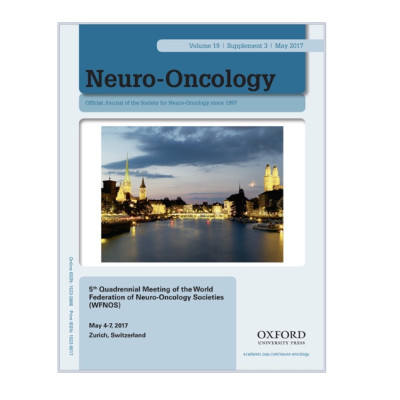Publication
Optimized radiotherapy protocols delay the malignant transformation of low-grade gliomas in-silico
A. Henares-Molina, S. Benzecry, P. Lara, M. García-Rojo, V.M. Pérez-García, A. Martínez-González
Neuro Oncol (2017) 19 (3): iii12.
MOLAB authors
Abstract
Abstract
Introduction: The optimal management of grade II gliomas (LGGs) remains controversial, and only limited definitive data is available to guide recommendations. Radiation therapy is currently offered to LGG patients with certain combinations of risk factors. However, its benefit on initial tumor control may be outweighed by late toxicities. Mathematical modeling has the potential of helping in selecting patients who may benefit from radiotherapy and in developing optimal fractionation schemes for patient subgroups. Materials and methods: LGG growth was described in-silico using a previously validated mathematical model incorporating accelerated repopulation and growth saturation. Tumor response to radiation and normal tissue toxicity was accounted for by a classical linear-quadratic (LQ) model. An optimization problem was posed to determine the optimal fractionation protocol (dose per fraction, number of doses and time between fractions) delaying the most the tumor’s malignant transformation (MT) while at the same time maintaining the toxicity on or below the level of the standard fractionation (30 daily fractions of 1.8 Gy). Results: The optimal protocols were found to be metronomic with 0.5 Gy/fraction and dose interspacing ranging from one week to one month depending on tumor’s growth rate. The MT was found to be delayed from 1 (fast growing LGGs) to 7 years (slowly growing LGGs). A robust protocol was found to provide a sub-optimal gain for all tumor growth rates. Other non-standard radiotherapy fractionations were found to provide survival advantages: (i) Protracted schemes with 1.8 Gy/fraction and time interval between doses ranging from one to three months (ii) Hypoprotracted schemes with dose per fraction of 3.2 Gy and larger interdose time spacings. In all cases the potential time delay of the MT, was of up to several years with the advantage over metronomic schemes of being more feasible from the practical point of view. Some fractionations were proven to provide a substantial survival advantage while at the same time reducing the toxicity in comparison with the standard fractionation. The concepts are being validated in biomimetic devices (microfluidic chips) and the results will be also reported at the conference. CONCLUSION: A substantial survival benefit could be achieved by using non-standard radiotherapy fractionation schemes together with a reduction in treatment toxicity. Thus, mathematical modelling techniques may complement the use of highly conformal techniques in order to improve treatment efficacy and reduce neurotoxicity.
FUNDING: Ministerio de Economía y Competitividad/FEDER, Spain [MTM2015-71200-R], Junta de Comunidades de Castilla-La Mancha, Spain [PEII-2014-031-P] and James S. Mc. Donnell Foundation 21st Century Science Initiative in Mathematical and Complex Systems Approaches for Brain Cancer [Collaborative award 220020450].















